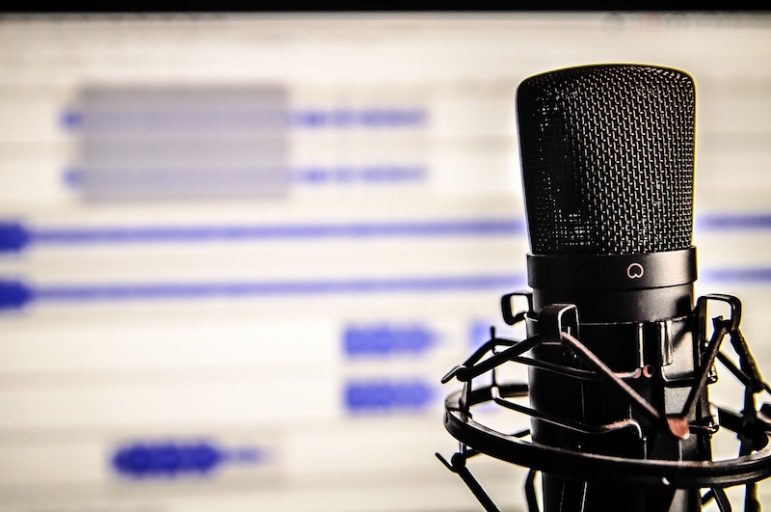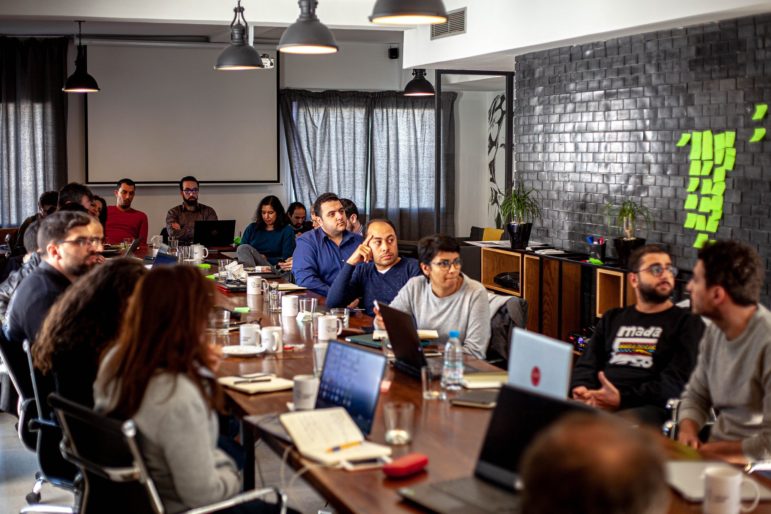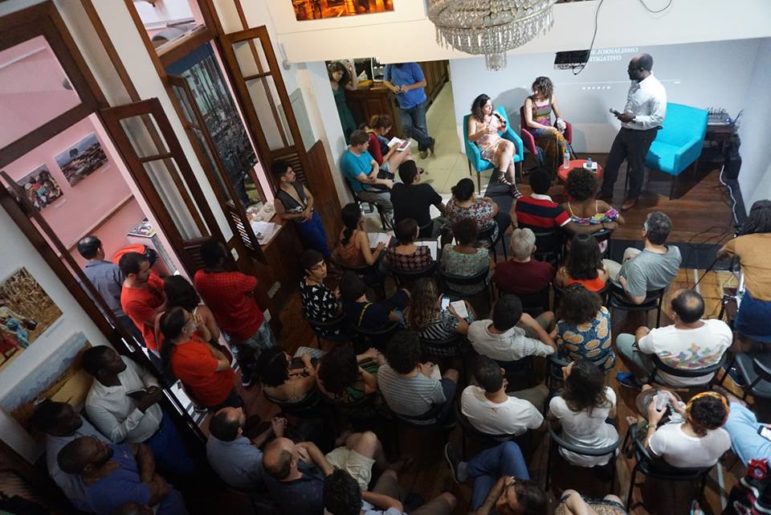

Photo: Pixabay
The Power of Emotion: How to Connect With Investigative Podcast Listeners
Connecting with your audience is key to telling a good story. But how can you actually make it happen? In this piece, Amina Boubia — from the Open Society Foundations’ Program on Independent Journalism — speaks to Siobhán McHugh to find out how she manages to connect with podcast audiences. McHugh worked as producer and consulting producer on a host of podcasts, several of which received the Gold award of the New York Radio Festival. She is also Associate Professor of Journalism at the School of Arts, English and the Media at the University of Wollongong in Australia.
What do you start with when preparing a new podcast?

Siobhán McHugh.
Siobhán McHugh: It’s difficult to talk about podcasts as if they were all the same, because there are different kinds of podcasts. I do crafted storytelling podcasts, which are investigative and go over many episodes. The podcast might not be on a heavy theme, but it’s still investigative somehow. I think it’s where podcasting can have the most impact. I usually start with the story and the characters. I ask myself: What is the plot? What is it about? Phoebe’s Fall is about the death of a young lady: Was it an accident or did someone push her down the chute? Heart of Artness is about how Aboriginal and non-Aboriginal people affect art, and what Aboriginal art means. Recently, I discovered Nice Try, which looks at utopian communities that failed. You need an idea, and you need people who can populate the podcast.
In terms of audience engagement, how are podcasts different from other formats?
McHugh: Podcast is all about the voice. That’s where it has the edge on print because it is innately personal. You can’t divorce it from the voice of the person who is speaking. You form an impression of someone through the voice, because there’s feeling, tone, personality, and emotions. I really believe that audio does emotion better than any other medium.
With visual imagery — certainly with moving imagery like video — you get speaking and some kind of action, and your brain is split between trying to understand those two things. But when you hear the gulp of a voice, as a listener, you lean in, and you are physically connected to that person because there are no barriers. You’re creating the bond in your own mind. You’re creating an idea of who this person is, and what she’s feeling, and you’re being moved and affected in some way. Often it’s that catch in the voice, it’s sadness, a little hesitancy, or a tiny little vocal tic that says everything. These are the things you need to start to recognize.
How do you manage to convey this intimacy?
McHugh: Normally through interviews, but they have to be in-depth interviews and go close to the heart. That in itself is a skill. I often interview someone for 60-90 minutes, and I might even do more than one interview. The interview is really critical to get that deep listening going: That will make somebody open up. During that time, you’re building trust and intimacy, which you can then reshape for your podcast — but the primary intimacy is already on the tape.
It’s different from the inverted pyramid model of journalism (what happened, who did it, why, when, where). This stuff is necessary, but it doesn’t make for intimacy. It’s just facts. In podcasting we have facts, but equally important is feeling. Feelings are as important as the facts. You ask someone not only what happened, but also how they feel about what happened. They can take us through it, take us back to that day, and build us a word picture. Deep listening interviews are not much different from interviews for long-form articles, but it’s that aliveness of the sound that is so important.
Any technical tips to convey this sense of intimacy through audio?
McHugh: There’s a lot of technique involved. If you don’t have the mic close enough, you’re throwing away half the intimacy factor. If you put the phone on the table, and record the interview as you would do for interview with a transcript, it won’t work, because it’s the feeling of the voice in your ear that bonds you as a listener to the podcast. You need to experiment with the tape recorder. Another tip: When recording for your audience, always wear headphones, because otherwise you don’t know how it’s sounding on the tape.
How do you find and chose your sounds?
McHugh: You can either catch sound while recording or you can go hunting for sound to illuminate your story. I was once interviewing a woman, and just when she mentioned that her mother was taken away from her when she was three, the woman’s granddaughter started singing. It was a magical moment on the tape as the woman didn’t even notice she had stopped, before continuing what she was saying. It worked on so many levels: It was a metaphor for this woman when she was little, and also for the fact she had survived.
I am always conscious of sound, not just words. When working on Phoebe’s Fall, I learned that Phoebe was doing karate, and I immediately thought about the sound of karate, of people kicking and shouting. This really animates the story. Sound provides elements of pace and texture which are crucial to not making it boring. But, at the same time, it’s real, genuine. You’re not falsifying things; you’re imaginatively carrying the sense of what happened through in a non-literal way. You can use sound as metaphor.
What tip would you give to someone who goes hunting for sound for the first time?
McHugh: Start thinking through your ears is my advice. Use the tape recorder like a camera. Just put on the headphones, put “record” on stand by — because you are not actually recording — and listen to how things are changing around you. Suddenly you can hear a conversation a few tables away, or you hear a bird up above you in a tree that you hadn’t noticed before. The mic will suddenly guide you to the sounds around you. Train yourself to look for all those moments.
I record sound wherever I go. I was on a little ship recently, and they started dropping the anchor. It’s the most amazing sound. You can use it in a show: For example, as the splash happens, you could say something. Some innately beautiful sounds will always be worth recording, like the sound of a crowd at a sports event — and not necessarily a big event. In your storytelling art, the sound of people clapping and going “yeah!” or “come on!” might suggest community, or friendship, or support.
How can the host sound close to the listeners?
McHugh: Be authentic. Be true to yourself and to your subject. You don’t necessarily need a lively host with a strong voice. You can have the exact opposite, and it could suit the story. Plus, as the host, you’re not a person of authority. You don’t want to be one of those newsreaders who talk as if they are important. Podcast is different. You want to sound just like somebody else playing a specific role. You’re part of your listening community, you’re bound to your listeners, you’re a stand-in for them. They are accompanying you, and you’re like their friend, more than their teacher or expert. It’s about humanizing things, making yourself relatable by showing a little bit of who you are, which is different from what journalists traditionally do.
Do you have specific tips that help the host sound authentic?
McHugh: Keep the metadata, the outtakes, those little scenes outside the main interview — these are very prominent in podcasts now, as they help to make you sound natural. For example, take our little chat about the ocean before we actually started this interview. Sometimes it’s nice to run that through underneath, as a layer, as you introduce somebody. You could say: “I am talking today to Siobhán McHugh in Australia…” and you could hear me in the background saying: “It’s a pity it’s dark, otherwise I would have shown you the ocean outside.”
When you prepare a storytelling podcast, you record everything while on the journey of making the podcast. If you get in the car to go to an interview, you can record the car. This would act as a punctuation, a great change between scenes, and it breaks down the barrier. Then let people listen so they can tell you truthfully where they got bored, and listen yourself to great podcasts. There are lists of best podcasts, and there are also those we review at RadioDoc Review, a journal I work on pro bono. Listen to them, and figure out how they resonate with you, and how it suits your own story.
How do you manage spontaneity in a podcast?
McHugh: I write scripts, but in a way that sounds spontaneous when I read them. You write for the ears, and you write differently for the ear than for the eye. Even if I have my script, I will sometimes ask someone from the team to improvise around a little moment in the script. The script is there as one layer, but you can play with it, especially if there are two hosts talking something through on the spot. If it works, then fine, and if it doesn’t, you throw it out. Be prepared to throw out a lot.
In a way it’s very complicated, like making a film is. I wrote an article about that called Podcasting’s Dirty Secret: Audio Storytelling Takes Art, Craft – and Tons of Time. Sometimes I might be sitting all day playing with a sequence, and at the end of the day I decide it’s not working. I’ve got literally zero to show for eight hours of work. To appreciate how good a sequence is, every time you put on a new mix, a different layer, you have to listen to it in real time. I usually block the speech bits and work around them with the sounds.
What’s the best part?
McHugh: You can have fun with it. While working on Heart of Artness, I broke my leg. I was on crutches for several weeks, and did the podcast from my living room. But instead of ignoring that, I brought it into the story. In a later episode, I got the sound engineer to come, and he asked what’s wrong with my leg. I told the story of my dog running into another dog in a park, and of the other dog who had then charged at me. I recorded my dog complaining while I was telling the story, and said: “Oh, you’re sorry now!” It’s like a post-script.
The great liberation of podcasting is that you can be as natural as you want to be without being self-indulgent. That’s the fine line. Be real, but don’t bore people with every silly detail of your trivial morning. I know we have the debate about objectivity. I have always believed in being balanced rather than being objective, because we innately have views. With a podcast, you’re already a character through your voice, you can’t help it. So you might as well be open about that, and give a little bit of a sense of what you think, or who you are, even if it’s only something like: “I can’t get going until I have my morning coffee” — just a small item of information that should come in organically.
What do you know about your audiences and how do you find out who they are?
McHugh: Podcast audiences are showing themselves to be different from radio audiences, for example. They feel quite invested in the podcast, and like they can connect to you as a host more closely than they would to a radio person. The biggest and easiest way to connect with the audience is through social media. Social media is also a way to allow your audience to connect to each other and have a discussion.
At a more advanced stage, you could think about having a live event, even if it’s just a small one with 25 people gathering in the local café. Listeners seem to want to go to those things. People who are fans of a certain podcast really want to meet other fans, because they already have the same interest. Radio Ambulante does this very well. They get a lot of ideas from chatting to people, so it starts to build momentum for the podcast as well. It’s a nice circle that develops. You could also incorporate the comments you get into a podcast, as a kind of back-section.
This article was originally published in the Program on Independent Journalism newsletter of the Open Society Foundations (OSF) and is reproduced here with permission. Note: OSF is a major donor to GIJN.
 Amina Boubia is a program specialist for the Program on Independent Journalism at the Open Society Foundations. She has previously worked as a columnist for Dîn wa Dunia. She graduated from Sciences Po with a PhD in political science, specializing in the Islamic world.
Amina Boubia is a program specialist for the Program on Independent Journalism at the Open Society Foundations. She has previously worked as a columnist for Dîn wa Dunia. She graduated from Sciences Po with a PhD in political science, specializing in the Islamic world.










